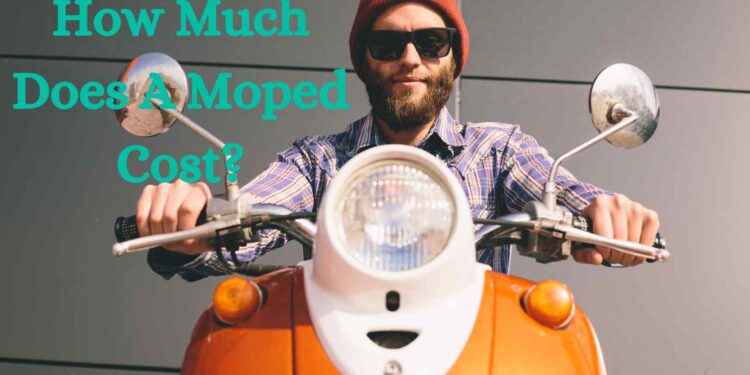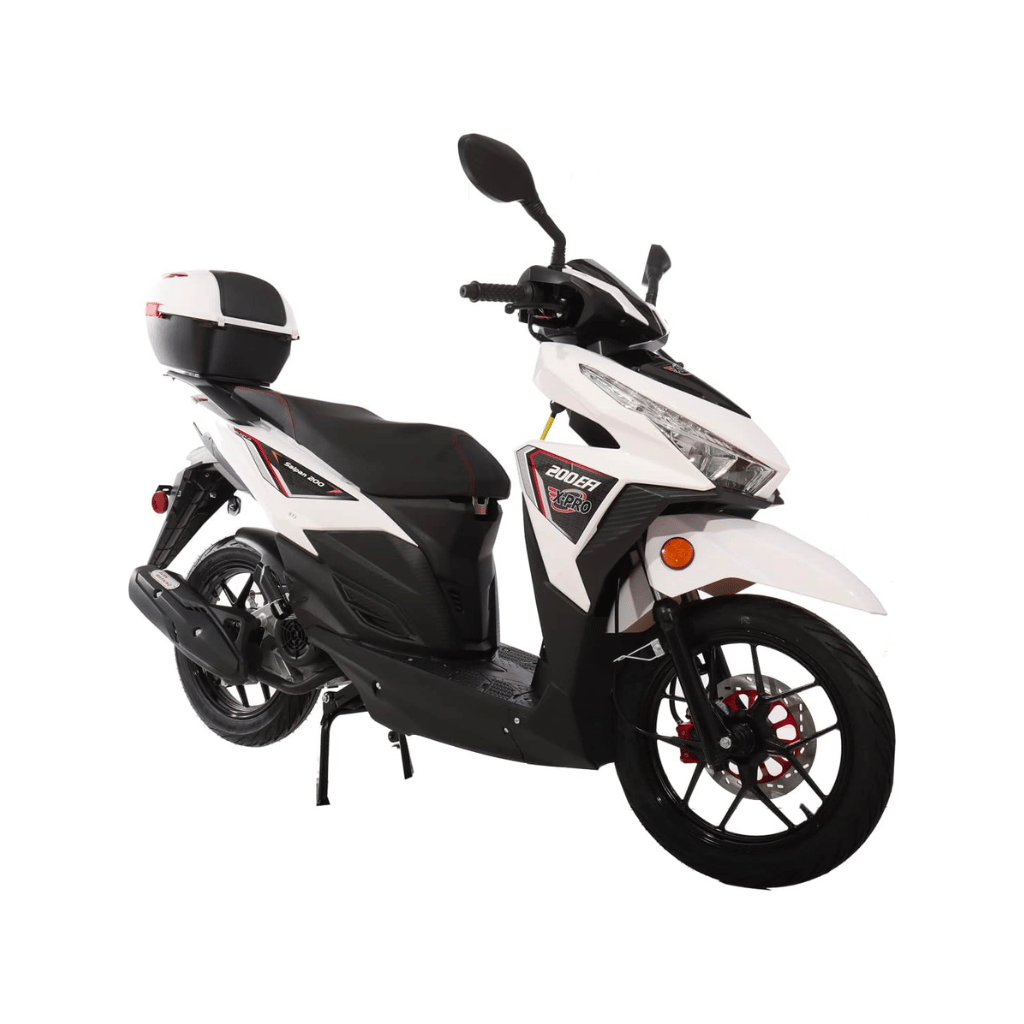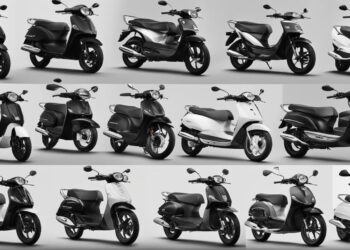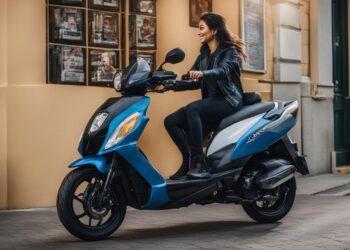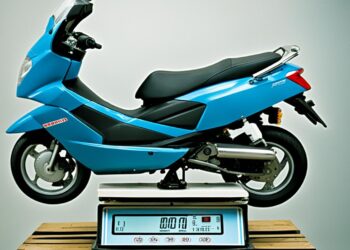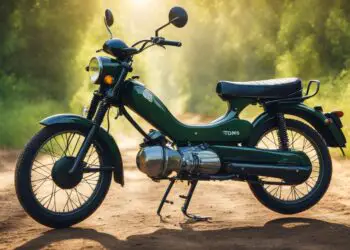If you’re looking for a cost-effective and eco-friendly mode of transportation, a moped might just be the answer you’re looking for. But how much does a moped actually cost? In this article, we’ll take a look at the factors that influence the price of a moped, the different types of mopeds available, and how to make the most of your moped investment.
What is a Moped?
Before we dive into the nitty-gritty of moped prices, let’s define what a moped actually is. A moped is a low-powered motorized vehicle that typically has two wheels and pedals for manual propulsion.
Mopeds are classified as a type of motorcycle, but they are generally smaller, lighter, and less powerful than other types of motorcycles. They are also designed to be more fuel-efficient and environmentally friendly.
How Much Does a Moped Cost?
1. Gas-Powered Mopeds
- Low-end: $500-$1,500
- Mid-range: $1,500-$3,000
- High-end: $3,000-$6,000+
2. Electric Moped
- Low-end: $1,000-$2,000
- Mid-range: $2,000-$4,000
- High-end: $4,000-$8,000+
Keep in mind that these prices are just a rough estimate and can vary widely depending on the brand, model, and features of the moped. Additionally, prices may also vary depending on where you live and purchase the moped.
Scooter Price Range
| Moped/Scooter Engine Size | Price (USD) |
|---|---|
| 50cc | $500 to $1000 |
| 125cc | $800 to $1,800 |
| 150cc | $800 to $2,000 |
| 200cc | $900 to $2,500 |
| 250cc | $3,000 to $7,000 |
| 300cc | $3,000 to $10,000 |
Factors that Influence Moped Prices
When it comes to the price of a moped, there are several factors to consider. Some of the main factors that can influence the price of a moped include:
1. Brand and Model
The brand and model of a moped can have a significant impact on its price. Some of the most popular moped brands include Vespa, Honda, Yamaha, and Piaggio. The more well-known and reputable the brand, the more expensive the moped is likely to be.
2. Engine Size
The engine size of a moped can also impact its price. Generally speaking, mopeds with larger engines tend to be more expensive than those with smaller engines. This is because larger engines typically provide more power and speed, which can be a desirable feature for some riders.
3. Features and Accessories
Mopeds can come equipped with a variety of features and accessories, such as luggage racks, windshields, and additional storage compartments. These features can add to the overall cost of the moped.
4. Condition
The condition of a moped can also impact its price. New mopeds tend to be more expensive than used ones, but they also come with a warranty and are less likely to require maintenance. Used mopeds, on the other hand, may have lower upfront costs but could require more frequent repairs and maintenance.

Types of Mopeds
Now that we’ve covered the factors that can impact the price of a moped, let’s take a look at the different types of mopeds that are available.
1. Gas-Powered Mopeds
Gas-powered mopeds are the most common type of moped. They are powered by a small gasoline engine and typically get between 50 and 100 miles per gallon. Gas-powered mopeds are generally more powerful and faster than electric mopeds, but they also require more maintenance.
2. Electric Mopeds
Electric mopeds are becoming more popular as people look for more eco-friendly transportation options. They are powered by a rechargeable battery and typically have a range of between 20 and 50 miles per charge. Electric mopeds are generally quieter and require less maintenance than gas-powered mopeds, but they can also be more expensive upfront.
How to Save Money on a Moped
If you’re looking to purchase a moped but want to keep costs down, there are several ways to do so:
1. Buy Used
Buying a used moped can be a great way to save money. Just make sure to inspect the moped thoroughly before making a purchase to ensure that it’s in good condition and won’t require costly repairs in the near future.
2. Look for Deals
Keep an eye out for deals and promotions on new mopeds. Many dealerships offer seasonal discounts or other promotions that can help you save money.
3. Consider a Less Expensive Brand
While well-known brands like Vespa and Honda may be more expensive, there are other, lesser-known brands that offer quality mopeds at a more affordable price.
4. Opt for a Lower Engine Size
As mentioned earlier, the engine size of a moped can impact its price. Choosing a moped with a smaller engine can be a cost-effective option that still provides you with the benefits of owning a moped.
Conclusion
Overall, the price of a moped can vary widely depending on a variety of factors. Gas-powered mopeds are generally less expensive than electric mopeds, but they also require more maintenance. When purchasing a moped, it’s important to consider factors like brand, model, engine size, and features to ensure that you’re getting the best value for your money.
FAQs
- Are mopeds street legal?
- Yes, mopeds are street legal in most states. However, laws regarding the use of mopeds on public roads may vary depending on where you live.
- Do mopeds require a special license to operate?
- In most states, you will need a special license or endorsement to operate a moped. Check with your local DMV for specific requirements.
- How fast can a moped go?
- The top speed of a moped will depend on its engine size and other factors. Generally speaking, most mopeds can reach speeds of 30-40 mph.
- Can I ride a moped on the highway?
- No, mopeds are not designed for use on highways or other high-speed roads.
- Are mopeds eco-friendly?
- Yes, mopeds are generally more eco-friendly than other types of vehicles because they are fuel-efficient and emit fewer emissions. However, it’s important to note that gas-powered mopeds still contribute to air pollution and are not completely emissions-free.

